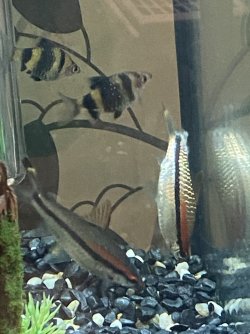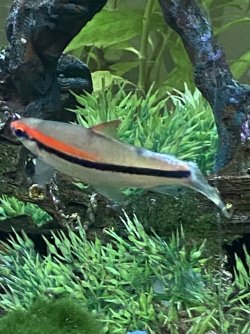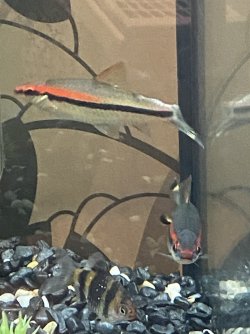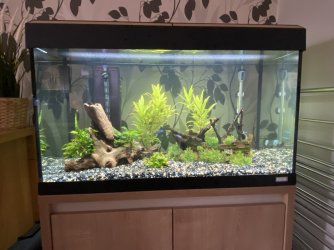How much salt did you add?
A video of the fish swimming might offer information about that downward behaviour.
The white stuff on the caudal peduncle region (just before the tail) is covered in excess mucous.
What other fish are in the tank?
Has the fish been attacked?
Is there anywhere the fish might have been trapped and damaged its tail?
-------------------
I would normally recommend rock salt at a dose rate of 2 heaped tablespoons per 20 litres of water. Keep the salt in the tank for 2 weeks.
If you used that amount of salt and it didn't help, then a broad spectrum fish medication that treats fungus, bacteria and protozoan infections might help.
-------------------
Before you treat the tank, do the following things.
Work out the volume of water in the tank:
measure length x width x height in cm.
divide by 1000.
= volume in litres.
If you have big rocks or driftwood in the tank, remove these before measuring the height of the water level so you get a more accurate water volume.
When you measure the height, measure from the top of the substrate to the top of the water level.
You can use a permanent marker to draw a line on the tank at the water level and put down how many litres are in the tank at that level.
There is a calculator/ converter in the "FishForum.net Calculator" under "Useful Links" at the bottom of this page that will let you convert litres to gallons if you need it.
Remove carbon from the filter before treating or it will adsorb the medication and stop it working.
Wipe the inside of the glass down with a clean fish sponge. This removes the biofilm on the glass and the biofilm will contain lots of harmful bacteria, fungus, protozoans and various other microscopic life forms.
Do a 75% water change and gravel clean the substrate. The water change and gravel cleaning will reduce the number of disease organisms in the water and provide a cleaner environment for the fish to recover in. It also removes a lot of the gunk and this means any medication can work on treating the fish instead of being wasted killing the pathogens in the gunk.
Make sure any new water is free of chlorine/ chloramine before it is added to the tank.
Clean the filter if it hasn't been done in the last 2 weeks. However, if the filter is less than 6 weeks old, do not clean it. Wash the filter materials/ media in a bucket of tank water and re-use them. Tip the bucket of dirty water on the garden/ lawn. Cleaning the filter means less gunk and cleaner water with fewer pathogens.
Increase surface turbulence/ aeration when using salt or medications because they reduce the dissolved oxygen in the water.







